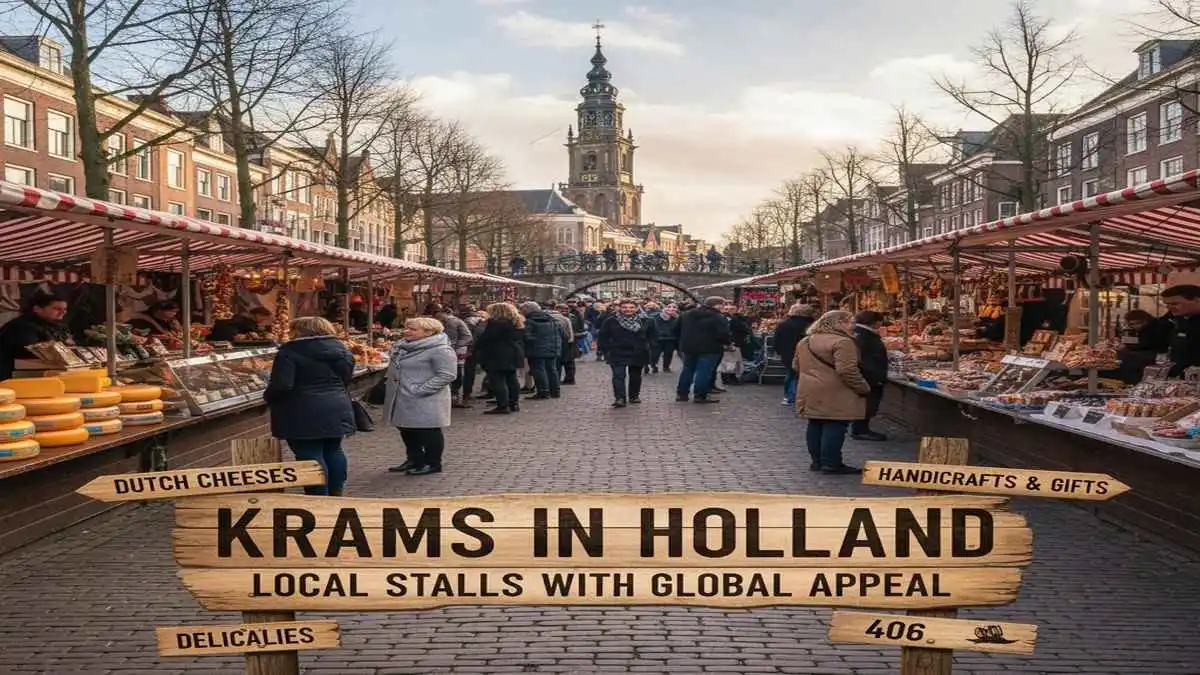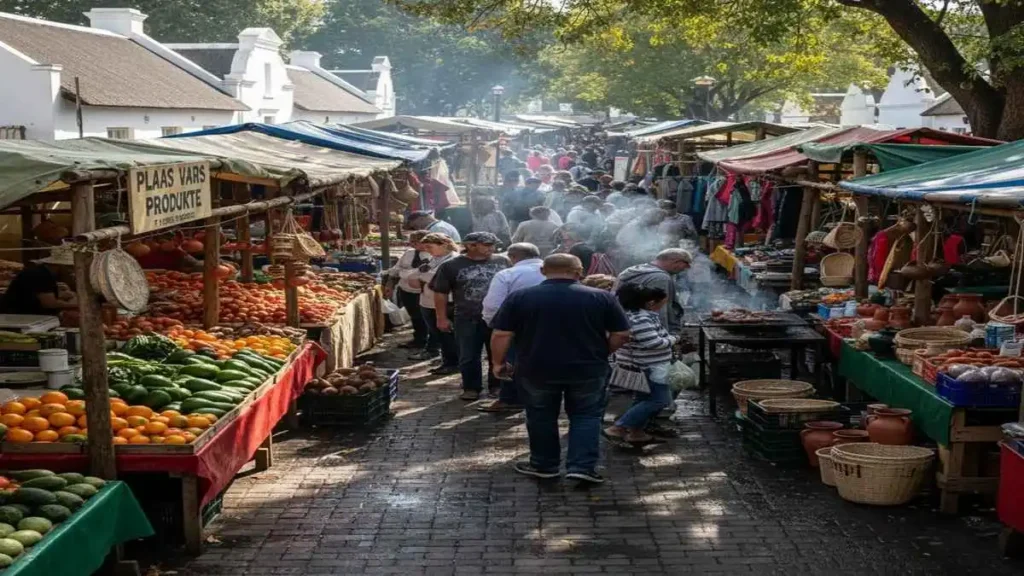BLOG
Kraams in Holland: Local Stalls with Global Appeal

Netherlands markets are renowned for their vibrant atmosphere, and at their core are the traditional kraams. These market stalls, seen in bustling cities and small towns alike, represent much more than commerce. It is a place where farmers, artisans, and vendors share their goods, while communities gather to connect. From tulips and cheeses to handmade crafts, Market stalls in the Netherlands embody the Netherlands’ unique blend of culture, tradition, and modern living.
Table of Contents
The Meaning of “Kraam” in Dutch
The word kraam in Dutch literally translates to “stall” or “booth.” In the context of markets, it describes the temporary or semi-permanent structures set up by vendors. Unlike large retail stores, Market stalls in the Netherlands are often compact and personalized, reflecting the seller’s craft, produce, or specialty. They serve as a microcosm of Dutch market culture, where the interaction between buyer and seller goes beyond transaction, often extending into conversation, advice, and community bonding.
Historical Background of Kraams
The historical background of kraams in the Netherlands dates back to medieval times, when towns held open-air markets in central squares. Farmers, fishermen, and artisans would set up temporary stalls to sell their goods directly to locals and travelers. These kraams became symbols of Dutch trade and entrepreneurship, playing a vital role in the nation’s economic and cultural growth. Today, they remain a cherished link between tradition, community, and modern market life.
The Role of Kraams in Dutch Markets
It forms the backbone of Dutch markets, providing:
- Access to Fresh Products: Many kraams sell fruits, vegetables, cheeses, bread, fish, and flowers sourced directly from local farms or producers. This makes markets an essential part of sustainable and fresh food culture.
- Support for Small Businesses: It provides an affordable and flexible platform for small-scale entrepreneurs, artisans, and farmers to sell their products without the high costs of permanent retail spaces.
- Cultural Exchange: Markets with diverse Market stalls in the Netherlands often feature international foods and crafts, reflecting the multicultural makeup of Dutch cities.
- Community Interaction: Unlike supermarkets, markets with kraams encourage direct contact between sellers and buyers, fostering trust, personal connections, and a lively social atmosphere.

Famous Dutch Markets Known for Kraams
While it can be found across the country, certain markets have gained national and international recognition for their scale and cultural significance:
- Albert Cuyp Market (Amsterdam): One of the most famous street markets in Europe, featuring hundreds of stalls selling everything from spices and fabrics to traditional Dutch snacks.
- Bloemenmarkt (Amsterdam): A floating flower market where Market stalls in the Netherlands line houseboats, offering fresh blooms and bulbs year-round.
- Markthal (Rotterdam): Though primarily an indoor food hall, many stalls are designed in the style of traditional it, combining modern architecture with old-world charm.
- Dappermarkt (Amsterdam): Known for its multicultural offerings, with Market stalls in the Netherlands featuring goods from Africa, Asia, and the Middle East alongside Dutch specialties.
Popular Goods Sold at Kraams
It varies depending on the type of market and region, but some items remain staples of Dutch market culture:
- Flowers and Plants: The Netherlands is world-renowned for its flowers, particularly tulips, and flower Market stalls in the Netherlands are among the most colorful and iconic sights in Dutch markets.
- Cheese (Kaas): Dutch cheeses such as Gouda, Edam, and Leerdammer are often sold from traditional Market stalls in the Netherlands, sometimes accompanied by tastings.
- Haring (Herring): At fish kraams, one can enjoy the famous Dutch delicacy of raw herring served with onions and pickles.
The Social and Cultural Importance of Kraams
It holds deep social and cultural importance in Dutch life, transforming markets into lively community spaces. Beyond trade, they foster human connection, tradition, and shared experiences. The colorful displays, aromas, and friendly conversations create an atmosphere that blends leisure with culture. For many families, visiting it is a cherished ritual passed through generations, symbolizing authenticity, community spirit, and the enduring charm of face-to-face interaction in an increasingly digital world.
FAQs
Q1: Are kraams only found in the Netherlands?
While market stalls exist worldwide, the Dutch kraam is distinct in its cultural context and historical ties to Dutch market traditions.
Q2: What makes kraams popular today?
They offer fresh, local products, affordable shopping, and a lively, community-centered experience that supermarkets often lack.
Q3: Can tourists visit Kraams?
Yes. Markets like Albert Cuyp and Bloemenmarkt are especially popular with tourists seeking authentic Dutch goods and cultural immersion.
Conclusion
In Dutch markets, kraams are more than just stalls; they are symbols of tradition, entrepreneurship, and community life. From the tulip-filled flower kramen of Amsterdam to the cheese stalls of Gouda, these simple structures connect past and present, locals and visitors, commerce and culture. In an age of mass production and online shopping, the humble kraam remains a timeless reminder of the value of authenticity, human connection, and the joy of shared spaces.
-

 FRIENDSHIP MESSAGES2 months ago
FRIENDSHIP MESSAGES2 months ago100+ Heart Touching Sorry Messages for Friends
-

 ANNIVERSARY WISHES6 months ago
ANNIVERSARY WISHES6 months ago100+ Beautiful Engagement Anniversary Wishes Messages and Quotes
-

 BIRTHDAY WISHES5 months ago
BIRTHDAY WISHES5 months ago300+ Happy Birthday Wishes for Brother | Heart Touching Happy Birthday Brother
-

 BIRTHDAY WISHES6 months ago
BIRTHDAY WISHES6 months ago200+ Unique Birthday Wishes for Your Best Friend to Impress on Their Big Day
































